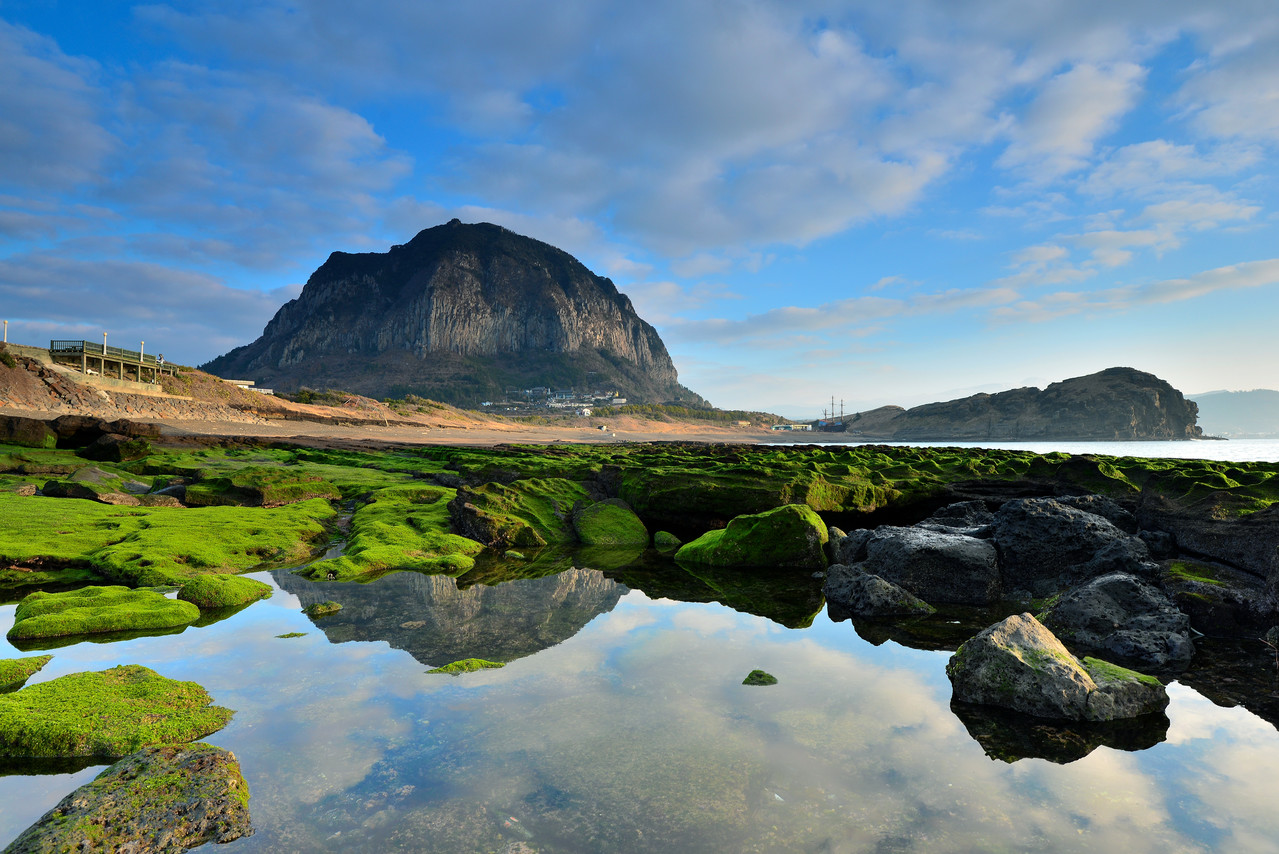
Sanbangsan Mountain is the result of violent volcanic activity some 700,000 to 800,000 years ago and is in fact a huge body of lava. The cliffs on the southern side of the lava dome are marked with a rich variety of curious formations such as weathering pits and talus scree slopes, some of which are as high as 200m. As its name ‘sanbang’ – literally meaning ‘a cave inside a mountain’ – suggests, this mountain contains a cave, which is located about 150m above sea level and has a spectacular view out over the ocean. Due to its close location to the sea and its high elevation, the peak is often ringed with clouds. The upper slopes of the mountain have their own distinct climatic conditions and are protected for their value for botanical research.
The Sanbangsa Temple and also the Bomunsa Temple, which holds the relics of Buddha, are also located on the mountain. Walk along the stone-steps between the two temples and you will find the Sanbanggulsa Grotto. A signal beacon called ‘Yeondae’ in Korean stands at the roadside in front of the mountain, which, in the past, used to fire and smoke to relay urgent messages. Regarding function, it is similar to the more well-known ‘Bongsudae’ signal beacons; but ‘Yeondae’ beacons were built around hilly or coastal areas while ‘Bongsudae’ beacons were built on mountain tops. During the daytime, smoke was used to send warning signals, while fire was used at night.
Available
Not available
Not available
Permitted
